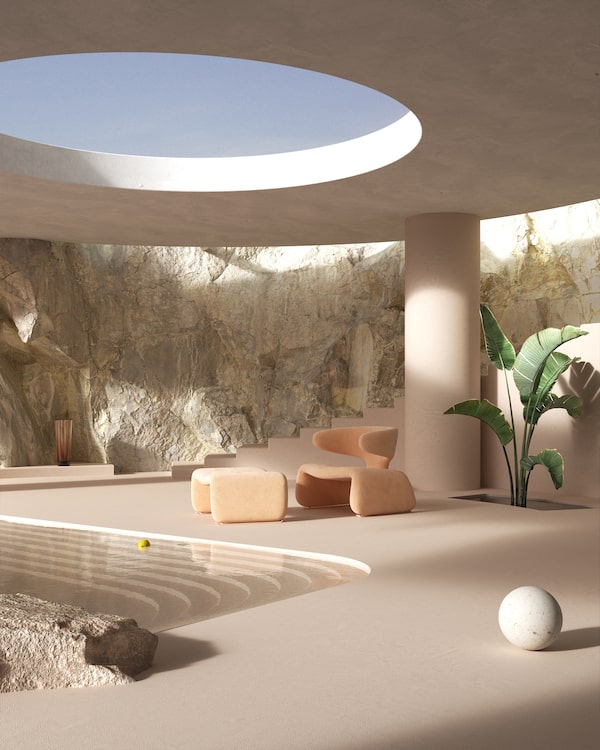
Dreamscape concepts by Montreal’s Studio Rotolo include details such as curves and pastel hues that are popular in real decor.Supplied
If you’re someone who is interested in architecture and design and active on Instagram, you may have noticed a genre of images emerge early in the pandemic: buildings and rooms that are plausible, yet subtly surreal. Upon closer inspection, they aren’t photographs of real places, but works of 3-D rendered digital art known as “dreamscapes,” created by a growing number of designers including Italy’s Evoque Lab, London’s Charlotte Taylor and Stefano Giacomello of Montreal’s Studio Rotolo.
Dreamscapes are ethereal but their popularity is rooted in the practical creative challenges of the past two years. At the pandemic’s start, many lifestyle brands found themselves cancelling traditional product photo shoots (which usually require travel and amassing large teams in a physical space) and started looking for other ways to situate their wares in evocative advertisements. Suddenly, 3-D rendered dreamscapes went from being an artistic hobby shared on social media to an in-demand service influencing contemporary aesthetics.

Supplied
“We have started to see [designers of real life] coffee shops, stores, using the same colours, the same types of objects or architecture that you would see on Instagram,” Giacomello says. To illustrate this influence, he points out the popularity of dreamscape details such as archways, pastel hues and desert-inspired decor in interiors today. Curves are easy to render digitally so fluid styles and objects, from curvaceous soaker tubs to plump chairs and sofas, are having a moment digitally and in our homes. Popular housewares such as sculptural candles and Gustaf Westman-inspired curved mirrors all feel plucked from the computer-generated serenity of virtual realities.
While dreamscapes may influence IRL design, ultimately, they’re not intended to be physically replicable. “They’re impossible spaces,” says Giacomello. Nonetheless, he is working on creating real furniture inspired by the organic shapes of dreamscapes for clients and his own studio.
If metaverses (immersive, sophisticated virtual worlds) emerge as some tech leaders hope, today’s dreamscapes could become the blueprints for how the virtual spaces we may one day visit look and feel. Already, firms of metaverse architects have emerged and interior designers can’t be far behind. How these worlds evolve is only limited by their creators’ imaginations.



